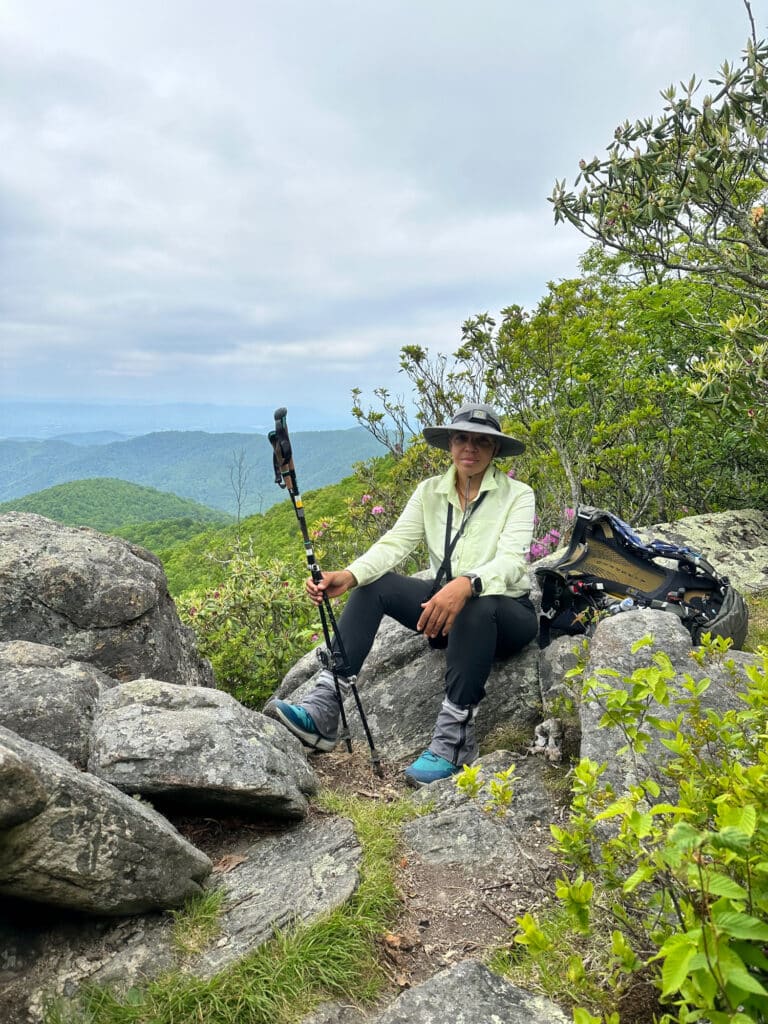by GRAHAM AVERILL
As the leaves shift from green into golden hews of red, orange, and yellow, head for higher ground where a palette of color is spilling down the mountainsides.. .
In the Southeast, you can’t get any higher than the peaks described in the following pages. These are our states’ highest mountains, the pinnacles of earth that tower over the surrounding mountains and valleys, providing a bird’s eye view of the technicolor display of the Southern Appalachian autumn.
———-
Mount Mitchell, North Carolina – Click Here for a Map and Directions
Not only is the 6,684 foot mountain the highest point in North Carolina, it’s the highest mountain east of the Rockies. The peak is the centerpiece of Mount Mitchell State Park, complete with gift shop, restaurant, and paved road to the summit. But don’t let the soft amenities fool you. Miles of rugged hiking trails traverse the mountain, offering a variety of views of the surrounding ridges.
The View
Mitchell itself is dominated by an evergreen spruce-fir forest (much of which is being destroyed by acid deposition, air pollution, and insects), but on a clear day, you can see for 85 miles in all directions from multiple vantage points. Evergreen forests highlight the 6,000-foot peaks of the Black Mountain Range, but everything below 5,000 feet is pure hardwood fall foliage bliss.
The Hike
Combine the Old Mitchell Trail with the Commissary Trail for a four-mile loop with expansive views to the east, or tackle a portion of the rugged Mountains to Sea Trail, which follows the ridgeline of Mitchell and its surrounding peaks for 16 miles.
———-
Sassafras Mountain, South Carolina – Click Here for a Map and Directions
Along the border of North Carolina and South Carolina, Sassafras Mountain sits at 3,560 feet, adjacent to Lake Jocassee. The summit was actually the last piece to be purchased by the state from Duke Power in the massive Jocassee land deal, permanently preserving the entire gorge area. Just like Mount Mitchell, you can drive within 100 yards of the summit, but the more adventurous choose to earn their foliage with a hike along the Foothills Trail.
The View
Four states used to be visible from the fire tower on top of Sassafras, but now that the fire tower has been dismantled, you’ll have to settle for thin views of the North Carolina mountains through a thick tree canopy on Sassafras’ summit. The hardwood forest that surrounds you on the hike up the mountain also will deliver the fall foliage goods.
The view may not be stellar from the summit, but the hike along the Foothills Trail is a reward all on its own. For a quick trip, hike the two miles from Chimney Top Gap to Sassafras, or for a longer excursion, try the nine-mile one-way hike from Table Rock State Park, which will take you through the heart of a hardwood forest in full fall bloom.
———-
Brasstown Bald, Georgia – Click Here for a Map and Directions
Don’t be fooled by the name: Brasstown Bald is actually a hardwood-covered summit with a tiny bald area less than an acre. But it’s been a revered summit in Georgia for centuries. Cherokee legend has it that a great flood killed the region’s entire population except for the families who escaped to the 4,784-foot peak. Today, no canoe is necessary: a shuttle service takes visitors straight to the top.
The View:
While the bald is small, a lookout tower is perched on top of Brasstown’s peak offering 360-degree views. On clear days, you can see the hardwood forests stretch into neighboring South Carolina and Tennessee.
The Hike
A half-mile paved trail leads to the summit. Make the obligatory trek to the lookout tower, then walk Wagon Train Trail, a 5.6-mile road bed that passes rocky clifflines with expansive views and leads deep into Brasstown’s “cloud forest,” a thick canopy of birch trees covered in white lichen.
———-
Mount Rogers, Virginia – Click Here for a Map and Directions
The 5,729-foot peak is blanketed with a dark evergreen forest—a crown so thick that views from the top are completely obscured. But fear not. While Rogers itself remains a stubborn green year-round, its neighboring peaks in Grayson Highlands State Park have enough blooming foliage and expansive views to keep you entertained all fall.
The View
The peak of Rogers is too dense to offer views, but the open meadows and rocky outcroppings along Wilburn Ridge in Grayson Highlands offer some of the best views in the state.
The Hike
Start with the open meadows of Massie Gap and take the Rhododendron Trail for two miles to Rhododendron Gap, where massive outcroppings overhang the vibrant colors smothering the hills and valleys below. Continue on the Appalachian Trail for another two miles to the evergreen summit of Mount Rogers.
———-
Spruce Knob, West Virginia – Click Here for a Map and Directions
Unlike most state high points in the Southeast, Spruce Knob has managed to maintain its rugged character. There is a lookout tower on its peak, but you won’t find a visitor’s center or shuttle ride to the top. The 4,863-foot peak is covered with rocky soil and one-sided red spruce, permanently shaped by the strong winds that whip across the slopes.
The View
The lookout tower certainly mars the otherwise pristine nature of Spruce Knob, but it’s hard to pass up the views from the concrete structure. Below the West Virginia high point, the massive Monongahela National Forest rolls away in every direction. To the east, you can see well into Virginia’s Shenandoah Valley.
The Hike
Huckleberry Trail drops 1,000 feet from the summit of Spruce Knob to the popular Seneca Creek. Much of the 6.5-mile technical trail traverses the exposed ridgeline, offering views of the mountain ash forest below.
———-
Clingmans Dome, Tennessee – Click Here for a Map and Directions
Nestled inside the Great Smoky Mountains National Park along the Appalachian Trail, this 6,643-foot mountain is the most visited state high point in the U.S. But that doesn’t make the view any less spectacular. The mountain’s evergreen dome has been ravaged by air pollution and invasive insects, but younger spruce are beginning to take over the landscape on the mountain itself, while the remainder of the Smokies are covered in blooming hardwoods as far as the eye can see.
The View
Clingmans Dome is probably most famous for its funky lookout tower, which looks like a flying saucer out of “The Jetsons.” From the saucer, you can see the ridgelines of the Smoky Mountains undulate into North Carolina and Tennessee, laying a blanket of color at your feet. On unusually clear days, the view stretches for 100 miles, but thanks to the poor air quality plaguing the park, views of 20 miles or less are more common.
The Hike
Trek eight miles up the Appalachian Trail from Newfound Gap. This is a classic stretch of the A.T. that parallels the paved road to the Dome, passing over two other 6,000 footers along the way. It’s eight miles from the Newfound Gap to the Clingmans Dome lookout tower, but you’ll be rewarded with a hike through a high-elevation alpine forest with periodic views of the hardwood canopy below.







